📘 Chapter 1: The Wonderful World of Science – Study Guide Hindi & English medium कक्षा 6 | पुस्तक: class 6 science Curiosity (जिज्ञासा) Prepared under the name of Grandmaster Bikram Sutradhar (5-Time World Record Holder) for the BASTRONAUTWAY initiative 🌟🏆 BEST TEACHER AWARD WINNER 2023 SirBikramSutradhar

📘 Chapter 1: The Wonderful World of Science – Study Guide Hindi & English medium कक्षा 6 | पुस्तक: class 6 science Curiosity (जिज्ञासा) Prepared under the name of Grandmaster Bikram Sutradhar (5-Time World Record Holder) for the BASTRONAUTWAY initiative 🌟 SirBikramSutradhar
📘 Chapter 1: The Wonderful World of Science – Study Guide Hindi & English medium
कक्षा 6 | पुस्तक: Curiosity (जिज्ञासा) Prepared under the name of Grandmaster Bikram Sutradhar (5-Time World Record Holder) for the BASTRONAUTWAY initiative 🌟
✨ Detailed Notes on Chapter 1: The Wonderful World of Science
✨ अध्याय 1: विज्ञान की अद्भुत दुनिया – विस्तृत नोट्स
1. Introduction to Science 🧪🔍
विज्ञान का परिचय
• Definition of Science:
Science is a structured approach to thinking, observing, and experimenting in order to gain knowledge about the world and reveal the mysteries of the universe..
🔬 विज्ञान की परिभाषा: विज्ञान सोचने, देखने और प्रयोग करने का एक व्यवस्थित तरीका है जिससे हम दुनिया को समझते हैं और ब्रह्मांड के रहस्यों को उजागर करते हैं।
• Nature of Science:
It is an adventure driven by curiosity, where we ask questions, explore, and discover how things work.
🌌 विज्ञान की प्रकृति: यह एक रोमांचक यात्रा है जो जिज्ञासा से प्रेरित होती है, जहाँ हम प्रश्न पूछते हैं, खोज करते हैं और चीज़ों के काम करने का तरीका समझते हैं।
• Scope of Science:
Science is everywhere—from tiny grains of sand to vast mountains, from kitchen activities to outer space phenomena.
🌍 विज्ञान का क्षेत्र: विज्ञान हर जगह है—रेत के छोटे कणों से लेकर विशाल पर्वतों तक, रसोई के काम से लेकर अंतरिक्ष की घटनाओं तक।
• Dynamic Nature:
Science is like a jigsaw puzzle; each discovery adds a piece, and new findings may reshape our understanding by correcting or refining earlier knowledge.
🧩 गत्यात्मक प्रकृति: विज्ञान एक जिगसॉ पज़ल की तरह है; हर खोज एक टुकड़ा जोड़ती है और नई जानकारी पहले की समझ को सुधार या परिष्कृत कर सकती है।

2. Importance of Curiosity ❓🤔
जिज्ञासा का महत्व
• Curiosity is the foundation of science. It drives us to ask questions like:
जिज्ञासा विज्ञान की नींव है। यह हमें ऐसे प्रश्न पूछने के लिए प्रेरित करती है जैसे:
o Why do stars shine? 🌟
o How does a flower know when to bloom? 🌸
o Why does water freeze or boil? 💧🔥❄️
• These questions lead to exploration and discoveries, making curiosity the heart of scientific inquiry.
ये प्रश्न खोज और खोजबीन की ओर ले जाते हैं, जिससे जिज्ञासा वैज्ञानिक जांच का मुख्य हिस्सा बनती है।
3. The Scientific Method 🧠🧪🔬
वैज्ञानिक विधि
• The scientific method is a step-by-step process used to find answers to questions or solve problems:
वैज्ञानिक विधि प्रश्नों के उत्तर खोजने या समस्याओं को हल करने के लिए एक चरण-दर-चरण प्रक्रिया है:
- Observation: Notice something interesting or puzzling in the environment. 👀
अवलोकन: वातावरण में कुछ रोचक या पहेली जैसी चीज़ पर ध्यान देना। - Question: Formulate a question based on the observation. ❓
प्रश्न: अवलोकन के आधार पर एक प्रश्न बनाना। - Hypothesis: Make a guess (possible answer) to explain the observation. 💡
परिकल्पना: अवलोकन को समझाने के लिए एक अनुमान लगाना। - Experiment/Observation: Test the hypothesis through experiments or further observations. 🧪🔍
प्रयोग/अवलोकन: प्रयोगों या आगे के अवलोकनों के माध्यम से परिकल्पना का परीक्षण करना। - Analysis: Evaluate the results to see if the hypothesis is correct. 📊
विश्लेषण: परिणामों का मूल्यांकन करना कि क्या परिकल्पना सही थी। - Conclusion: Draw conclusions and, if necessary, refine the hypothesis and test again. ✅
निष्कर्ष: निष्कर्ष निकालना और यदि आवश्यक हो तो परिकल्पना को सुधारकर फिर से परीक्षण करना।
• Example:
If a pen stops writing, you observe, question why, hypothesize that the ink is finished, check the ink, and confirm or revise your hypothesis based on findings. 🖊️
उदाहरण: यदि पेन लिखना बंद कर दे, तो आप अवलोकन करते हैं, कारण पूछते हैं, परिकल्पना करते हैं कि स्याही खत्म हो गई है, जांचते हैं और निष्कर्ष निकालते हैं।
4. Science in Everyday Life 🍳🔧💡
दैनिक जीवन में विज्ञान
• Science is not limited to laboratories; it is applied in daily activities:
विज्ञान केवल प्रयोगशालाओं तक सीमित नहीं है; यह हमारे रोज़ के कामों में भी होता है:
o A cook wondering why dal spills out of a cooker (too much water?). 👨🍳
o A bicycle repair person finding a puncture in a tire. 🚴♂️
o An electrician troubleshooting a non-working light bulb. 💡
• Anyone who asks questions and seeks answers using a logical process is acting like a scientist.
जो कोई भी प्रश्न पूछता है और तर्कसंगत तरीके से उत्तर खोजता है, वह एक वैज्ञानिक की तरह काम करता है।
5. What Will We Explore? 🌍🧬🍽️🧲🌡️🌠
हम क्या जानेंगे?
• The chapter outlines the subjects that will be explored throughout the book, which include::
अध्याय में पुस्तक में शामिल किए जाने वाले विषयों का परिचय दिया गया है:
o Planet Earth: Its unique ability to support life and the need to protect its environment. 🌎
o Diversity of Life: How plants and animals grow and adapt to different environments (e.g., seed to plant, caterpillar to butterfly). 🌱🦋
o Food and Water: The science behind food ingredients, cuisines, and water’s properties (freezing, boiling, raining). 🍲💧
o Materials: Understanding the properties of objects like paper, metal, plastic, rubber, and magnets. 📄🔩🧲
o Temperature: Exploring concepts of hot and cold (e.g., fever, water temperature). 🌡️
o Beyond Earth: Questions about the Sun, Moon, and stars. ☀️🌙⭐
6. Collaborative Nature of Science 👩🔬��🔬🤝
विज्ञान का सहयोगात्मक स्वरूप
• Science is a team effort. Scientists worldwide collaborate to solve problems and share knowledge.
विज्ञान एक सामूहिक प्रयास है। वैज्ञानिक विश्वभर में मिलकर समस्याओं को हल करते हैं और ज्ञान साझा करते हैं।
• Students are encouraged to work with friends to explore questions, making learning more fun and effective.
छात्रों को दोस्तों के साथ मिलकर प्रश्नों की खोज करने के लिए प्रेरित किया जाता है, जिससे सीखना अधिक मज़ेदार और प्रभावशाली होता है।
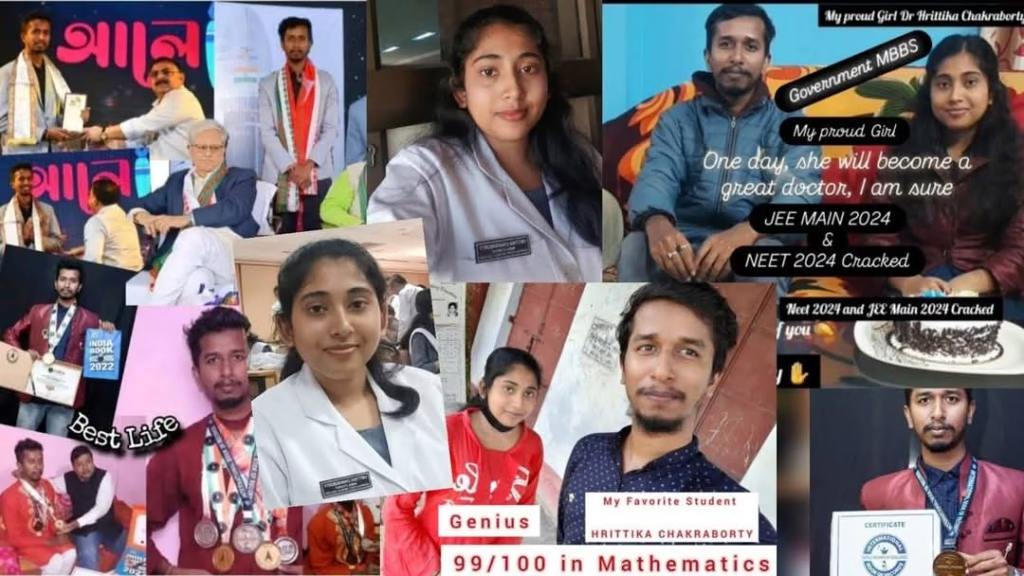
7. Key Message 📚✨
मुख्य संदेश
• Science is a joyful journey of exploration, driven by curiosity and questions.
विज्ञान जिज्ञासा और प्रश्नों से प्रेरित एक आनंदमयी खोज यात्रा है।
• The chapter emphasizes that there are no limits to discovery, and every question leads to new mysteries to unravel.
यह अध्याय बताता है कि खोज की कोई सीमा नहीं है और हर प्रश्न नई रहस्यमयी खोज की ओर ले जाता है।
• The phrase “To be a wise person, you must be a ‘whys’ person” encapsulates the importance of questioning and seeking answers.
वाक्यांश “To be a wise person, you must be a ‘whys’ person” प्रश्न पूछने और उत्तर खोजने के महत्व को दर्शाता है।
✅ Important Points to Remember 📝
✅ महत्वपूर्ण बिंदु याद रखने के लिए
- Science is Universal: It applies to everything, from the smallest to the largest phenomena. 🌐
विज्ञान सार्वभौमिक है: यह सबसे छोटी से लेकर सबसे बड़ी घटनाओं तक लागू होता है। - Curiosity Drives Science: Asking “why” and “how” is the starting point of scientific discovery. ❓🧠
जिज्ञासा विज्ञान को प्रेरित करती है: “क्यों” और “कैसे” पूछना वैज्ञानिक खोज की शुरुआत है। - Scientific Method: A logical process to solve problems—observe, question, hypothesize, test, analyze, conclude. 🔍
वैज्ञानिक विधि: समस्याओं को हल करने की एक तर्कसंगत प्रक्रिया—अवलोकन, प्रश्न, परिकल्पना, परीक्षण, विश्लेषण, निष्कर्ष। - Science in Daily Life: Everyday activities like cooking, repairing, or troubleshooting involve scientific thinking. 🍳🔧💡
दैनिक जीवन में विज्ञान: खाना बनाना, मरम्मत करना या समस्याओं का समाधान जैसी गतिविधियाँ वैज्ञानिक सोच को दर्शाती हैं। - Interconnected Ideas: Discoveries in one area (e.g., plants) connect to others (e.g., environment). 🌿🌍
आपस में जुड़े विचार: एक क्षेत्र में खोजें (जैसे पौधे) अन्य क्षेत्रों (जैसे पर्यावरण) से जुड़ी होती हैं। - Collaborative Learning: Science is more fun and effective when done with others. 👬🧪
- Ongoing Journey: Not all questions will be answered in Grade 5; science is a lifelong exploration. 🚀🔬
लगातार चलने वाली यात्रा: कक्षा 5 में सभी प्रश्नों के उत्तर नहीं मिलेंगे; विज्ञान जीवन भर की खोज है।
-
📘 Becoming an Astronaut in India (ISRO) – A Complete Guide After Class 12
📘 Becoming an Astronaut in India (ISRO) – A Complete Guide After Class 12 ✍️…
-
📘 Calculus: GATE Engineering Mathematics – Section 2
📘 Calculus: GATE Engineering Mathematics – Section 2 🧠 Prepared with Inspiration from GrandMaster Bikram…
-
✍️ Master English Grammar: Fun Tricks & Smart Hacks for Confident English! 📚✨
✍️ Master English Grammar: Fun Tricks & Smart Hacks for Confident English! 📚✨ 🔥 Presented…
-
Germany’s Warm Admiration for Indian & Asian Communities
🇩🇪✨ Germany’s Warm Admiration for Indian & Asian Communities A Heartfelt Celebration of Culture, Talent,…
-
📘 Master Vedic Math: Multiply Big Numbers Fast (3×3 & 4×4 Digit Trick)
📘 Master Vedic Math: Multiply Big Numbers Fast (3×3 & 4×4 Digit Trick) 👨🏫 By…
-
📘 Vedic Math: Multiplication & Division Shortcut Tricks
📘 Vedic Math: Multiplication & Division Shortcut Tricks 👨🏫 By Grandmaster Bikram Sutradhar🏆 5× World…
-
📘 VEDIC MATH: SQUARE & CUBE TRICKS (Full Guide for Competitive Exams)
📘 VEDIC MATH: SQUARE & CUBE TRICKS (Full Guide for Competitive Exams) 👨🏫 By Grandmaster…
-
📅Calendar Tricks & Shortcuts – Learn to Find Day, Date & More in Seconds!
📅 Calendar Tricks & Shortcuts – Learn to Find Day, Date & More in Seconds!…
-
🔥 Ultimate Guide to Computer & Laptop Shortcut Keys 🧠💻
🔥 Ultimate Guide to Computer & Laptop Shortcut Keys 🧠💻 🚀 Boost your speed 10X…
-
July 2025 Vedic Moon‑Sign Horoscope 🌙 | Saturn & Mercury Retrograde Insights
July 2025 Vedic Moon‑Sign Horoscope 🌙 | Saturn & Mercury Retrograde Insights 📝Prepare for July 2025 with…
-
Top 20 Shubh Tracks You MUST Watch on @SHUBHWORLDWIDE 🎧
Top 20 Shubh Tracks You MUST Watch on @SHUBHWORLDWIDE 🎧 📝 Top 20 Shubh Tracks…
-
🕊️ Remembering Diogo Jota: A Football Legend ⚽
🕊️ Remembering Diogo Jota: A Football Legend ⚽ The football world mourns the tragic loss…
-
Dr. Jahnnabi Choudhury Completes BDS Degree – A Proud Moment for a Teacher | SirBikramSutradhar | bAstronautWay | Grandmaster Bikram Sutradhar
Dr. Jahnnabi Choudhury Completes BDS Degree – A Proud Moment for a Teacher Dr. Jahnnabi…
-
🌟🎉 Anupa Datta Shines Again with 475 Marks in TBSE Class 12 Science 2025 – A True Inspiration! Tbse Board Result 2025 🎉🌟
📅 Published on: April 30, 2025📍 Agartala, Tripura In a world where challenges often dim…
-
🚀 bAstronautWay – Your Ultimate Learning Destination! 🎓✨
TBSE CBSE Undergraduate and Postgraduate Entrance Exams 📍 Our Locations: 📌 Amtali | 📌 Uttam…
-
Upcoming Cars in India 2025 🚗 | New Updates By GrandMaster Bikram Sutradhar | bAstronautWay Auto Review
Upcoming Cars in India 2025 🚗 | New Updates By GrandMaster Bikram Sutradhar | bAstronautWay…
-
🏆 Class 5 Mathematics Olympiad Practice Paper
🏆 Class 5 Mathematics Olympiad Practice Paper By GrandMaster Bikram Sutradhar | bAstronautWay | SirBikramSutradhar5…
-
Today’s Sports Highlights – August 22, 2025
Today’s Sports Highlights – August 22, 2025 By GrandMaster Bikram Sutradhar | bAstronautWay Sports fans…
💬 Best Question-and-Answer Pairs | सर्वश्रेष्ठ प्रश्न-उत्तर जोड़े
📘 Chapter 1: The Wonderful World of Science | अध्याय 1: विज्ञान की अद्भुत दुनिया
🔖 Class 6 | Book: Curiosity
❓Q1. What is science, and why is it described as an adventure?
🔁 विज्ञान क्या है, और इसे एक साहसिक कार्य क्यों कहा गया है?
💡 Answer / उत्तर:
Science is a way of thinking, observing, and experimenting to understand the world and universe. It is called an adventure because it involves exploring new ideas, asking questions, and discovering answers, much like a journey into the unknown. For example, wondering why stars shine or how a seed grows is part of this exciting exploration.
🔬 विज्ञान सोचने, देखने और प्रयोग करने का एक तरीका है ताकि हम दुनिया और ब्रह्मांड को समझ सकें। इसे एक साहसिक कार्य कहा जाता है क्योंकि इसमें नए विचारों की खोज, प्रश्न पूछना और उत्तर पाना शामिल है – जैसे एक अनजानी यात्रा। उदाहरण के लिए, यह जानना कि तारे क्यों चमकते हैं या बीज कैसे बढ़ता है – इस रोमांच का हिस्सा है।
❓Q2. Why is curiosity important in science?
🔁 विज्ञान में जिज्ञासा क्यों महत्वपूर्ण है?
💡 Answer / उत्तर:
Curiosity is the foundation of science because it inspires us to ask questions about the world, such as “Why does it rain?” or “How do plants grow?” These questions lead to observations, experiments, and discoveries, driving scientific progress.
❓ जिज्ञासा विज्ञान की नींव है क्योंकि यह हमें दुनिया के बारे में प्रश्न पूछने के लिए प्रेरित करती है, जैसे “बारिश क्यों होती है?” या “पेड़-पौधे कैसे बढ़ते हैं?” ये प्रश्न अवलोकन, प्रयोग और खोज की ओर ले जाते हैं, जो वैज्ञानिक प्रगति को आगे बढ़ाते हैं।
❓Q3. What is the scientific method, and how does it work?
🔁 वैज्ञानिक विधि क्या है, और यह कैसे काम करती है?
💡 Answer / उत्तर:
The scientific method is a step-by-step process to answer questions or solve problems. It includes:
- Observing something interesting or puzzling.
- Asking a question about it.
- Making a hypothesis (a possible answer).
- Testing the hypothesis through experiments or observations.
- Analyzing results to confirm or revise the hypothesis.
For example, if a pen stops writing, you might hypothesize that the ink is finished, check the ink, and confirm or make a new hypothesis if the ink is still there.
🔬 वैज्ञानिक विधि प्रश्नों के उत्तर या समस्याओं को हल करने की एक क्रमबद्ध प्रक्रिया है। इसमें शामिल हैं: - किसी रोचक या उलझन भरी चीज़ का अवलोकन करना।
- उस पर एक प्रश्न पूछना।
- एक परिकल्पना (संभावित उत्तर) बनाना।
- प्रयोग या अवलोकन द्वारा परिकल्पना की जाँच करना।
- परिणामों का विश्लेषण करना और परिकल्पना की पुष्टि या संशोधन करना।
उदाहरण: यदि कोई पेन लिखना बंद कर दे, तो हम मान सकते हैं कि स्याही खत्म हो गई है। स्याही की जांच करके हम पुष्टि कर सकते हैं या नई परिकल्पना बना सकते हैं।
❓Q4. How is science part of everyday life? Give examples.
🔁 विज्ञान हमारे दैनिक जीवन का हिस्सा कैसे है? उदाहरण दें।
💡 Answer / उत्तर:
Science is part of daily life when we use logical thinking to solve problems. Examples include:
• A cook adjusting water in a cooker to prevent dal from spilling.
• A bicycle repair person finding a puncture in a tire.
• An electrician checking if a light bulb or switch is faulty.
These actions involve observing, questioning, and testing, which are scientific methods.
🛠️ जब हम किसी समस्या को हल करने के लिए तार्किक सोच का उपयोग करते हैं, तो विज्ञान हमारे जीवन का हिस्सा बन जाता है। उदाहरण:
• कोई रसोइया कुकर में दाल न उफने देने के लिए पानी को समायोजित करता है।
• एक साइकिल मैकेनिक टायर में पंचर ढूंढ़ता है।
• एक बिजली मिस्त्री बल्ब या स्विच की खराबी की जांच करता है।
इन कार्यों में अवलोकन, प्रश्न पूछना और परीक्षण शामिल होता है – यही वैज्ञानिक तरीका है।

❓Q5. What are some topics we will explore in this book?
🔁 इस पुस्तक में हम कौन-कौन से विषयों का अध्ययन करेंगे?
💡 Answer / उत्तर:
The book will explore:
• Planet Earth and its environment.
• Growth and adaptation of plants and animals.
• Food ingredients and water’s properties (e.g., freezing, boiling).
• Materials like paper, metal, plastic, and magnets.
• Temperature (hot and cold).
• Celestial bodies like the Sun, Moon, and stars.
📚 इस पुस्तक में हम इन विषयों का अध्ययन करेंगे:
• पृथ्वी और उसका पर्यावरण
• पौधों और जानवरों की वृद्धि और अनुकूलन
• खाद्य सामग्री और पानी के गुण (जैसे जमना, उबालना)
• कागज, धातु, प्लास्टिक और चुंबक जैसे पदार्थ
• तापमान (गर्म और ठंडा)
• सूर्य, चंद्रमा और तारों जैसे खगोलीय पिंड
❓Q6. Why is science compared to a jigsaw puzzle?
🔁 विज्ञान की तुलना जिगसॉ पज़ल से क्यों की जाती है?
💡 Answer / उत्तर:
Science is like a jigsaw puzzle because each discovery adds a piece to our understanding of the world. New findings may fit perfectly or require rearranging earlier pieces if they were misplaced. The puzzle is endless, as every answer leads to new questions.
🧩 विज्ञान एक जिगसॉ पज़ल की तरह है क्योंकि हर खोज हमारी समझ में एक टुकड़ा जोड़ती है। नई खोजें पुराने टुकड़ों को फिर से व्यवस्थित करने की आवश्यकता भी पैदा कर सकती हैं। यह पहेली अनंत है, क्योंकि हर उत्तर नए प्रश्नों को जन्म देता है।
❓Q7. How can we act like scientists in daily life?
🔁 हम अपने दैनिक जीवन में वैज्ञानिकों की तरह कैसे कार्य कर सकते हैं?
💡 Answer / उत्तर:
We act like scientists by observing, questioning, and testing to solve problems. For example, if a pen stops writing, we observe, ask why, hypothesize (e.g., ink is finished), test by checking the ink, and conclude based on findings. Anyone following this process is working like a scientist.
🧠 जब हम किसी समस्या को हल करने के लिए अवलोकन, प्रश्न पूछना और परीक्षण करते हैं, तो हम वैज्ञानिकों की तरह कार्य करते हैं। उदाहरण: यदि पेन लिखना बंद कर दे, तो हम जांच करते हैं कि स्याही खत्म हुई है या नहीं – यह पूरी प्रक्रिया वैज्ञानिक सोच को दर्शाती है।
❓Q8. Why is collaboration important in science?
🔁 विज्ञान में सहयोग क्यों महत्वपूर्ण है?
💡 Answer / उत्तर:
Collaboration is important because science involves sharing ideas and working together to solve complex problems. Scientists worldwide collaborate, and students can work with friends to explore questions, making learning more fun and effective.
🤝 सहयोग इसलिए जरूरी है क्योंकि विज्ञान में विचारों को साझा करना और मिलकर समस्याओं को हल करना शामिल होता है। दुनियाभर के वैज्ञानिक साथ काम करते हैं। छात्र भी अपने मित्रों के साथ मिलकर अध्ययन करके विज्ञान को मज़ेदार और प्रभावशाली बना सकते हैं।
🧠 Best Question Set for Practice | अभ्यास के लिए सर्वश्रेष्ठ प्रश्न सेट
📘 Below are the answers to the practice question set provided for Chapter 1: The Wonderful World of Science from the Class 6 book Curiosity. The answers are concise, accurate, and aligned with the chapter content, ensuring clarity for a young learner. Each response draws from the detailed notes and key points previously outlined, tailored to the question type (MCQ, short answer, long answer, and activity-based).
✅ Multiple Choice Questions (MCQs)
1. What is the initial step in the scientific method?
वैज्ञानिक विधि का पहला चरण क्या होता है?
- A) Hypothesis
B) Observation 🔍
C) Experiment 🧪
D) Conclusion 📘 - Answer: B) Observation 🔍
Explanation: The scientific method begins with observing something interesting or puzzling in the environment, which sparks a question to explore further.
2. Why is science compared to a jigsaw puzzle? 🧩
- A) It is difficult to understand
B) Every discovery adds a piece to our knowledge 🧠
C) It is only for experts
D) It has a fixed number of pieces - Answer: B) 🧠
Explanation: Science is like a jigsaw puzzle because each new discovery contributes to our understanding of the world, and the process is ongoing with no fixed limit.
3. Which of the following is an example of science in daily life?
- A) Watching TV 📺
B) Checking why a light bulb is not working 💡
C) Playing a game 🎮
D) Listening to music 🎵 - Answer: B) Checking why a light bulb is not working 💡
Explanation: Troubleshooting a light bulb involves observing, questioning, and testing (e.g., checking the bulb or switch), which follows the scientific method.
✏️ Short Answer Questions / लघु उत्तरीय प्रश्न
4. Define science in your own words.
4. अपने शब्दों में विज्ञान की परिभाषा दें।
• Answer / उत्तर: Science is a way of exploring and understanding the world by observing, asking questions, and doing experiments to find answers about how things work. 🌍❓🧪
विज्ञान दुनिया को खोजने और समझने का एक तरीका है, जिसमें हम चीजों को देखकर, प्रश्न पूछकर और प्रयोग करके यह पता लगाते हैं कि चीजें कैसे काम करती हैं।
5. Why is curiosity called the heart of science?
5. जिज्ञासा को विज्ञान का हृदय क्यों कहा जाता है?
• Answer / उत्तर: Curiosity is the heart ❤️ of science because it drives us to ask “why” and “how” about the world, leading to questions that spark discoveries and new knowledge. 🌟
जिज्ञासा विज्ञान का हृदय ❤️ है क्योंकि यह हमें दुनिया के बारे में “क्यों” और “कैसे” पूछने के लिए प्रेरित करती है, जिससे खोज और नया ज्ञान प्राप्त होता है।
6. Mention the different stages involved in the scientific method.
वैज्ञानिक विधि में शामिल विभिन्न चरणों को सूचीबद्ध करें।
• Answer / उत्तर: The steps of the scientific method are:
- Observation 🔍 / अवलोकन
- Question ❓ / प्रश्न
- Hypothesis 💡 / परिकल्पना
- Experiment or further observation 🧪 / प्रयोग या आगे का अवलोकन
- Analysis 📊 / विश्लेषण
- Conclusion ✅ / निष्कर्ष
7. Give one example of how a cook might use the scientific method.
7. एक उदाहरण दीजिए कि एक रसोइया वैज्ञानिक विधि का उपयोग कैसे कर सकता है।
• Answer / उत्तर: A cook might notice that dal spills out of a pressure cooker (observation) and ask why (question). They hypothesize it’s due to too much water, test by reducing water in the next batch (experiment), and check if the dal cooks without spilling (analysis) to confirm the hypothesis (conclusion). 🍲🧠🧪
एक रसोइया यह देख सकता है कि प्रेशर कुकर से दाल बाहर निकल रही है (अवलोकन), और पूछता है क्यों? (प्रश्न)। वह परिकल्पना करता है कि पानी ज्यादा है, अगली बार पानी कम करके प्रयोग करता है और देखता है कि दाल बिना उबलकर बाहर निकले पकती है या नहीं (विश्लेषण), और फिर परिकल्पना की पुष्टि करता है (निष्कर्ष)।
-
📘 Becoming an Astronaut in India (ISRO) – A Complete Guide After Class 12
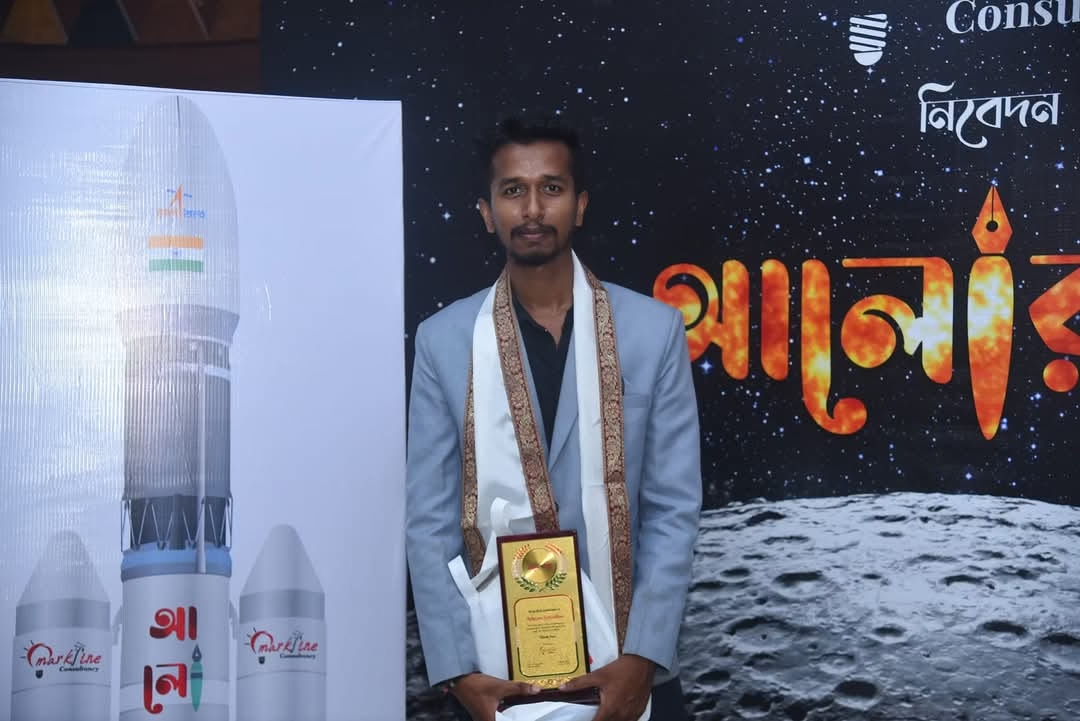
📘 Becoming an Astronaut in India (ISRO) – A Complete Guide After Class 12 ✍️…
-
📘 Calculus: GATE Engineering Mathematics – Section 2

📘 Calculus: GATE Engineering Mathematics – Section 2 🧠 Prepared with Inspiration from GrandMaster Bikram…
-
✍️ Master English Grammar: Fun Tricks & Smart Hacks for Confident English! 📚✨
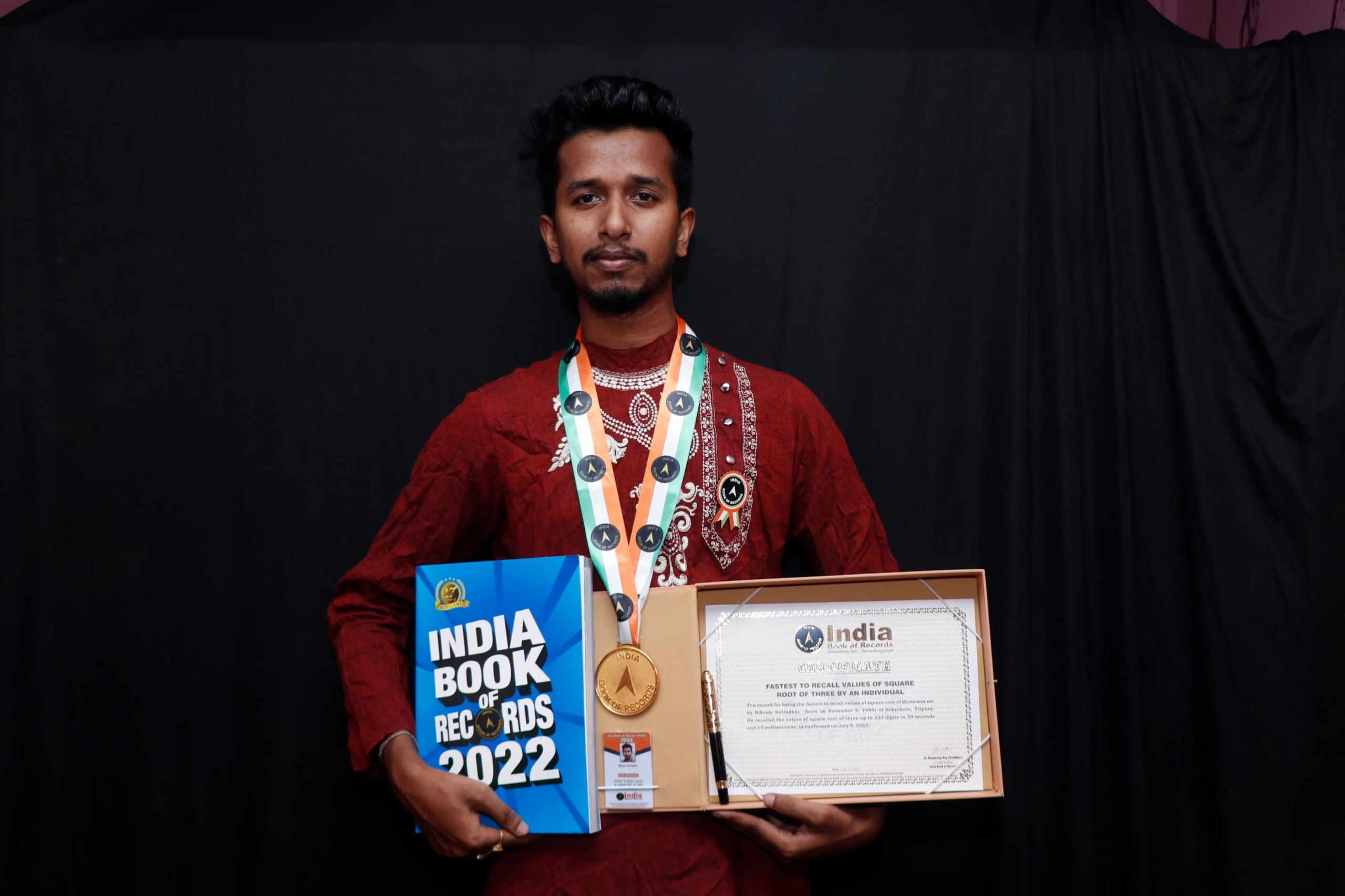
✍️ Master English Grammar: Fun Tricks & Smart Hacks for Confident English! 📚✨ 🔥 Presented…
-
Germany’s Warm Admiration for Indian & Asian Communities

🇩🇪✨ Germany’s Warm Admiration for Indian & Asian Communities A Heartfelt Celebration of Culture, Talent,…
-
📘 Master Vedic Math: Multiply Big Numbers Fast (3×3 & 4×4 Digit Trick)
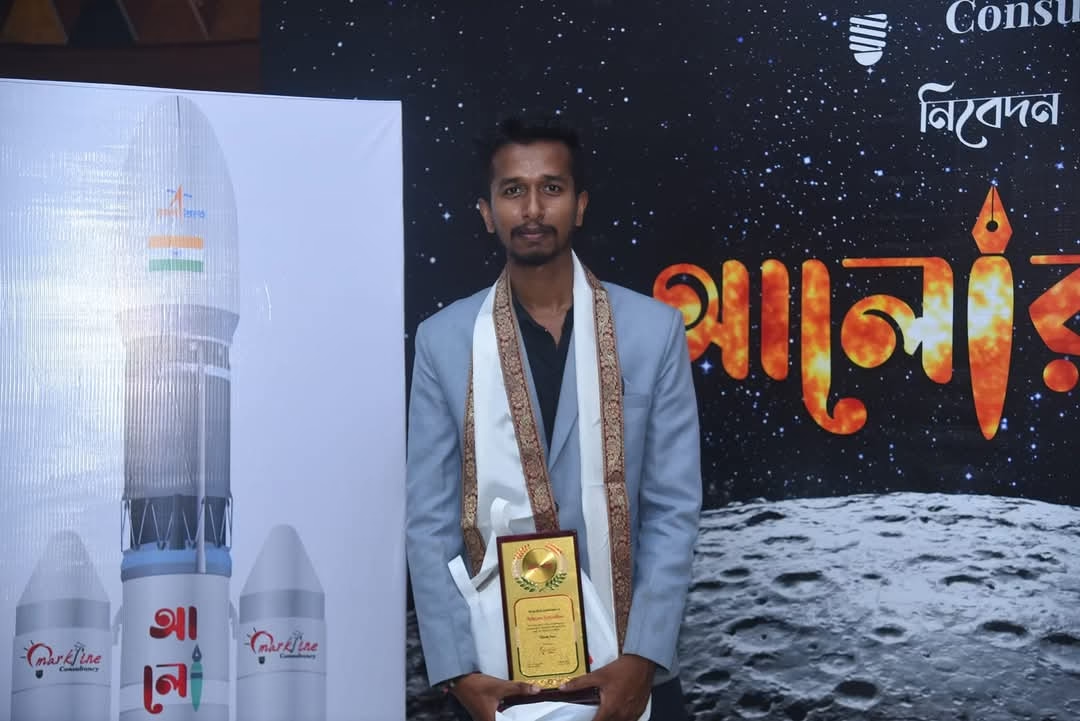
📘 Master Vedic Math: Multiply Big Numbers Fast (3×3 & 4×4 Digit Trick) 👨🏫 By…
-
📘 Vedic Math: Multiplication & Division Shortcut Tricks
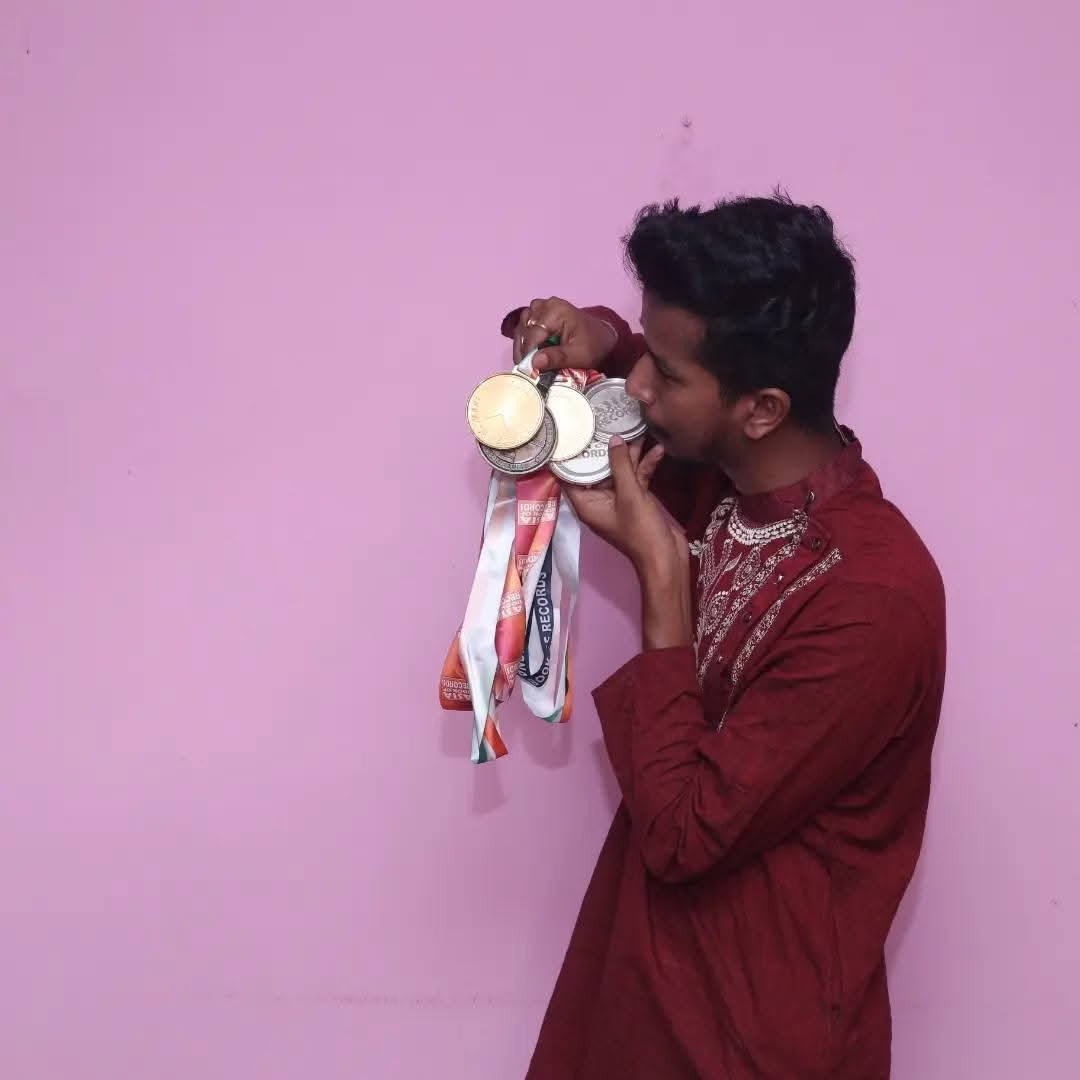
📘 Vedic Math: Multiplication & Division Shortcut Tricks 👨🏫 By Grandmaster Bikram Sutradhar🏆 5× World…
-
📘 VEDIC MATH: SQUARE & CUBE TRICKS (Full Guide for Competitive Exams)
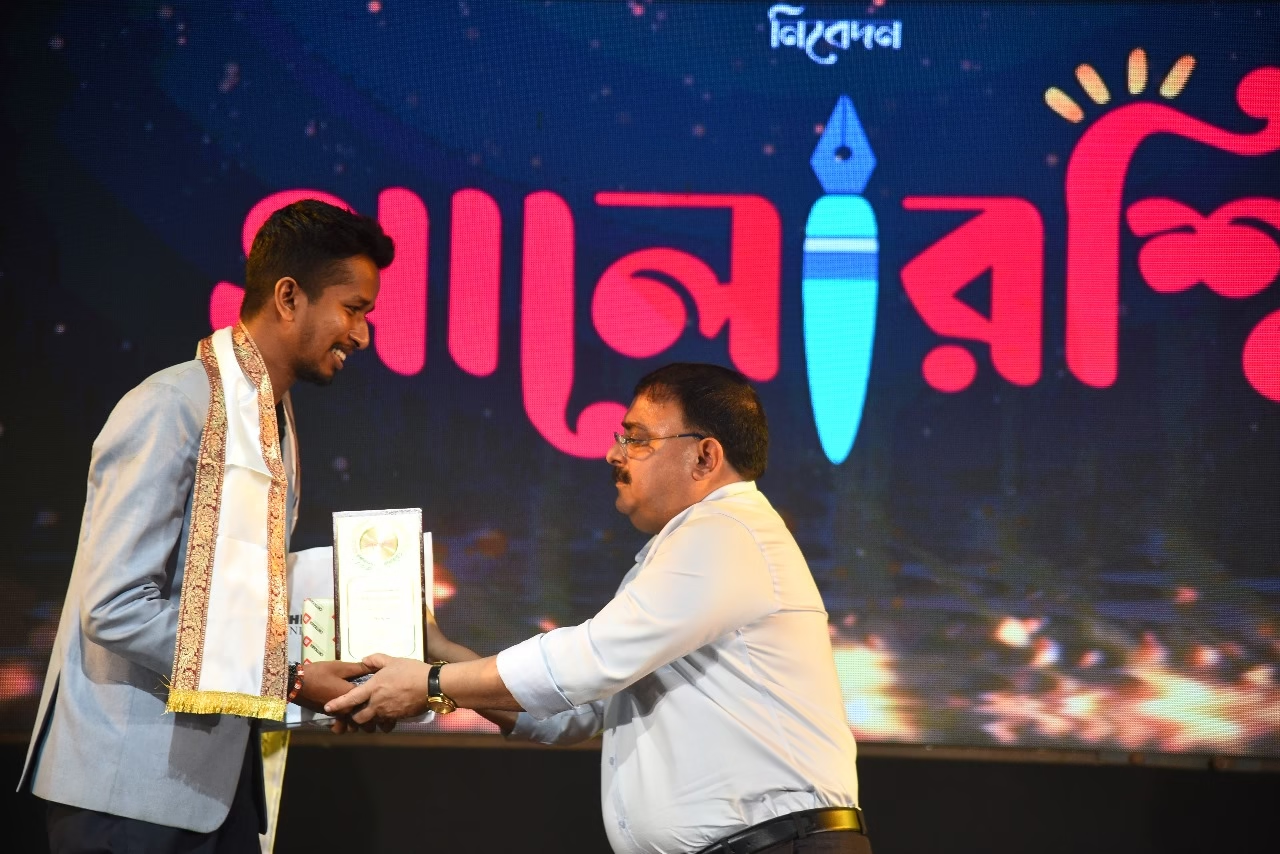
📘 VEDIC MATH: SQUARE & CUBE TRICKS (Full Guide for Competitive Exams) 👨🏫 By Grandmaster…
-
📅Calendar Tricks & Shortcuts – Learn to Find Day, Date & More in Seconds!

📅 Calendar Tricks & Shortcuts – Learn to Find Day, Date & More in Seconds!…
-
🔥 Ultimate Guide to Computer & Laptop Shortcut Keys 🧠💻
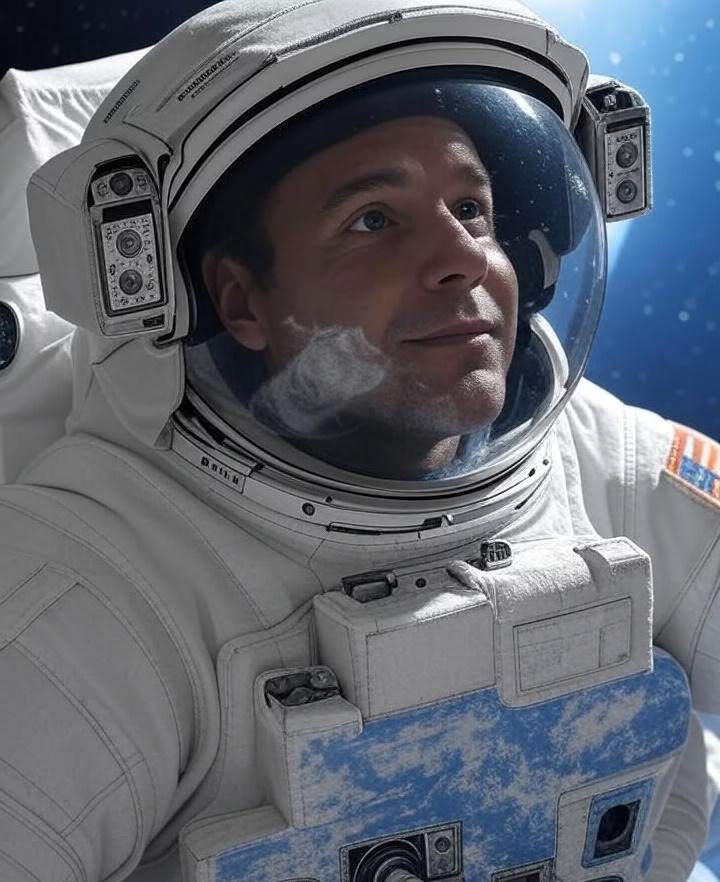
🔥 Ultimate Guide to Computer & Laptop Shortcut Keys 🧠💻 🚀 Boost your speed 10X…
-
July 2025 Vedic Moon‑Sign Horoscope 🌙 | Saturn & Mercury Retrograde Insights

July 2025 Vedic Moon‑Sign Horoscope 🌙 | Saturn & Mercury Retrograde Insights 📝Prepare for July 2025 with…
-
Top 20 Shubh Tracks You MUST Watch on @SHUBHWORLDWIDE 🎧

Top 20 Shubh Tracks You MUST Watch on @SHUBHWORLDWIDE 🎧 📝 Top 20 Shubh Tracks…
-
🕊️ Remembering Diogo Jota: A Football Legend ⚽

🕊️ Remembering Diogo Jota: A Football Legend ⚽ The football world mourns the tragic loss…
-
Dr. Jahnnabi Choudhury Completes BDS Degree – A Proud Moment for a Teacher | SirBikramSutradhar | bAstronautWay | Grandmaster Bikram Sutradhar

Dr. Jahnnabi Choudhury Completes BDS Degree – A Proud Moment for a Teacher Dr. Jahnnabi…
-
🌟🎉 Anupa Datta Shines Again with 475 Marks in TBSE Class 12 Science 2025 – A True Inspiration! Tbse Board Result 2025 🎉🌟
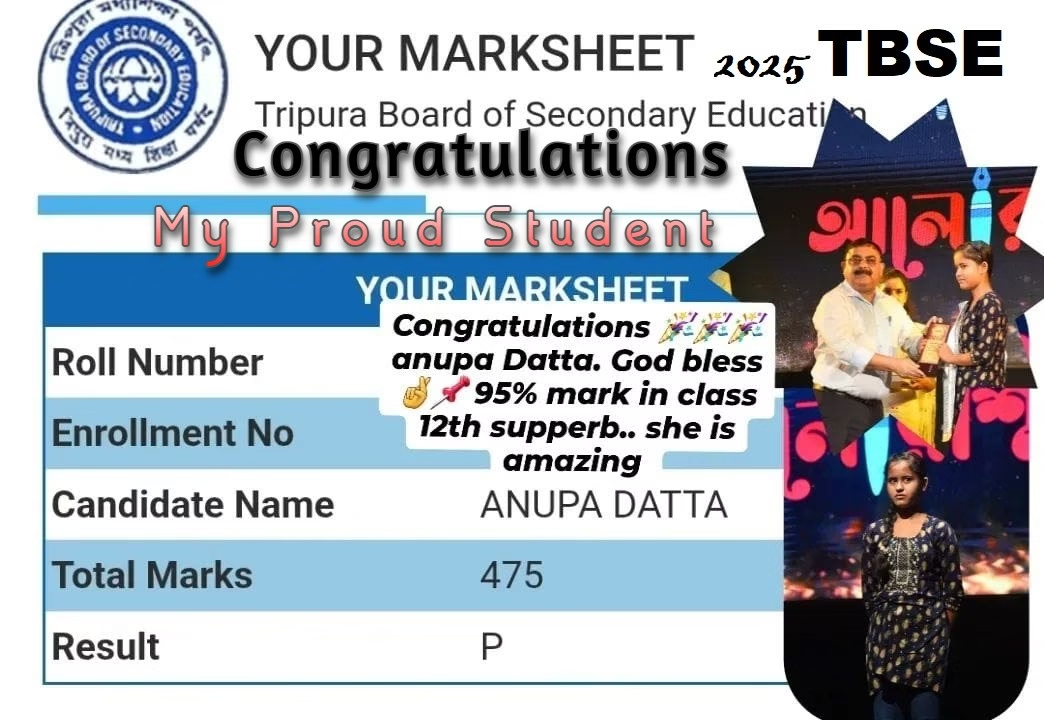
📅 Published on: April 30, 2025📍 Agartala, Tripura In a world where challenges often dim…
-
🚀 bAstronautWay – Your Ultimate Learning Destination! 🎓✨

TBSE CBSE Undergraduate and Postgraduate Entrance Exams 📍 Our Locations: 📌 Amtali | 📌 Uttam…
-
Upcoming Cars in India 2025 🚗 | New Updates By GrandMaster Bikram Sutradhar | bAstronautWay Auto Review

Upcoming Cars in India 2025 🚗 | New Updates By GrandMaster Bikram Sutradhar | bAstronautWay…
-
🏆 Class 5 Mathematics Olympiad Practice Paper
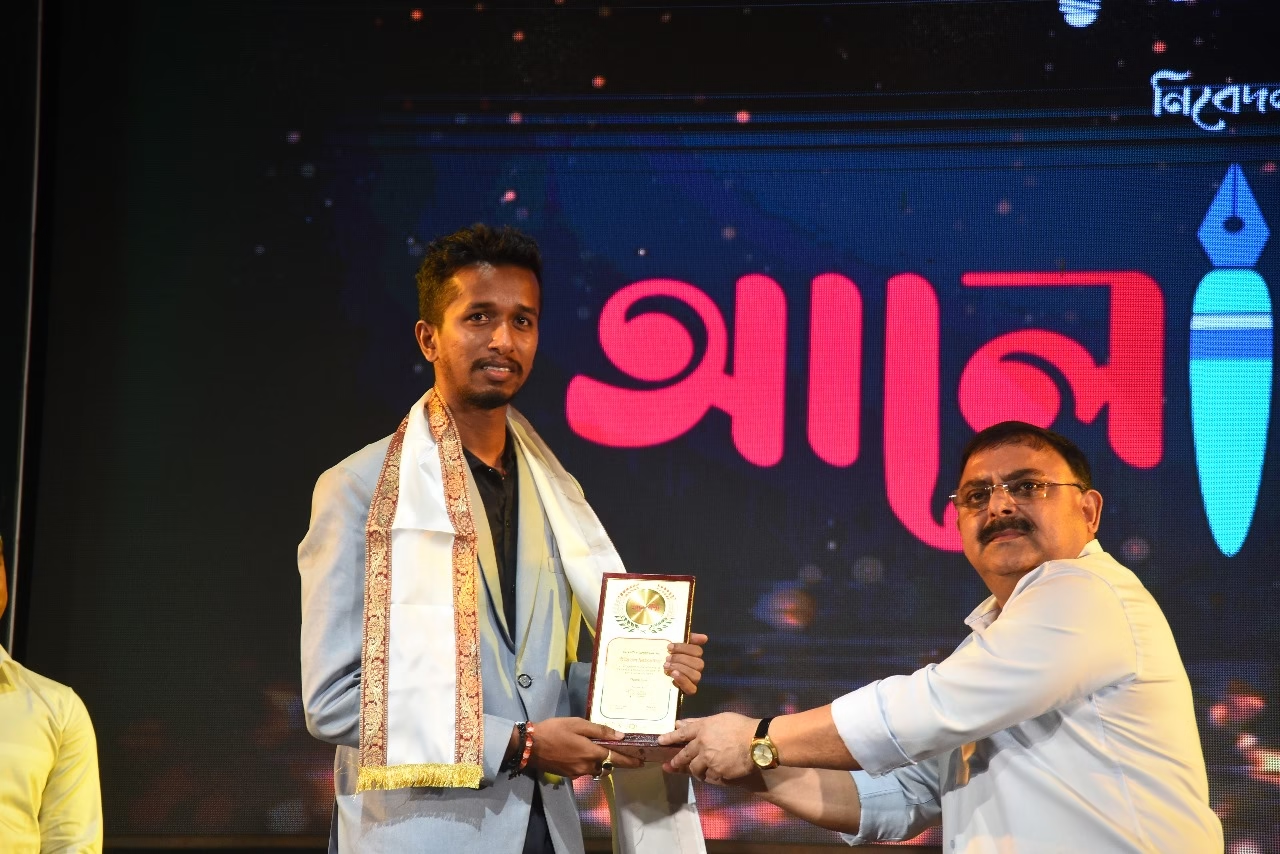
🏆 Class 5 Mathematics Olympiad Practice Paper By GrandMaster Bikram Sutradhar | bAstronautWay | SirBikramSutradhar5…
-
Today’s Sports Highlights – August 22, 2025

Today’s Sports Highlights – August 22, 2025 By GrandMaster Bikram Sutradhar | bAstronautWay Sports fans…
📝 Long Answer Questions / दीर्घ उत्तरीय प्रश्न
8. Explain how the scientific method can be used to find out why a bicycle tire is flat.
8. यह समझाइए कि वैज्ञानिक विधि का उपयोग कर यह कैसे पता लगाया जा सकता है कि साइकिल का टायर पंक्चर क्यों है।
• Answer / उत्तर:
To find out why a bicycle tire is flat using the scientific method:
- Observation: Notice the tire is flat and the bicycle is hard to ride. 🚲
- Question: Why is the tire flat? ❓
- Hypothesis: The tire might have a puncture causing air to leak. 💨
- Experiment: Check the tire by inflating it and listening for hissing sounds or submerging it in water to look for bubbles indicating a puncture. 🧪
- Analysis: If bubbles appear, the hypothesis is correct; if no puncture is found, consider another hypothesis, like a faulty valve.
- Conclusion: If a puncture is confirmed, repair it; if not, test the new hypothesis (e.g., check the valve). ✅
This step-by-step process helps identify the cause logically.
उत्तर / Answer in Hindi:
यह पता लगाने के लिए कि साइकिल का टायर पंक्चर क्यों है, वैज्ञानिक विधि का उपयोग इस प्रकार किया जा सकता है:
- अवलोकन: देखना कि टायर पंक्चर है और साइकिल चलाना कठिन है। 🚲
- प्रश्न: टायर पंक्चर क्यों है? ❓
- परिकल्पना: हो सकता है कि टायर में छेद हो जिससे हवा निकल रही हो। 💨
- प्रयोग: टायर में हवा भरें और सीटी जैसी आवाज़ सुनें या उसे पानी में डुबोएं और बुलबुले देखें। 🧪
- विश्लेषण: अगर बुलबुले दिखाई देते हैं तो परिकल्पना सही है; अगर नहीं, तो दूसरी परिकल्पना जैसे कि वाल्व में खराबी पर विचार करें।
- निष्कर्ष: अगर पंक्चर की पुष्टि होती है, तो उसे ठीक करें; अगर नहीं, तो नई परिकल्पना की जांच करें (जैसे वाल्व)। ✅
यह क्रमबद्ध प्रक्रिया तर्कसंगत ढंग से कारण खोजने में मदद करती है।
9. Describe two topics you will explore in this book and why they are important.
9. इस पुस्तक में आप किन दो विषयों का अध्ययन करेंगे और वे क्यों महत्वपूर्ण हैं, वर्णन कीजिए।
• Answer / उत्तर:
Two topics explored in the book are:
- Planet Earth and its environment 🌍: This topic studies why Earth supports life and how we can protect its environment. It’s important because a healthy environment ensures clean air, water, and food for all living things. 💧🌱
- Properties of materials 🧲: This involves learning about materials like paper, metal, plastic, and magnets. It’s important because understanding materials helps us choose the right ones for objects (e.g., metal for keys, rubber for erasers) and innovate new products. 🔧🧪
These topics connect science to daily life and encourage responsible actions.
उत्तर / Answer in Hindi:
पुस्तक में दो विषयों का अध्ययन किया गया है:
- ग्रह पृथ्वी और इसका पर्यावरण 🌍: यह विषय यह अध्ययन करता है कि पृथ्वी पर जीवन क्यों संभव है और हम इसके पर्यावरण की रक्षा कैसे कर सकते हैं। यह इसलिए महत्वपूर्ण है क्योंकि एक स्वस्थ पर्यावरण सभी जीवों के लिए स्वच्छ हवा, पानी और भोजन सुनिश्चित करता है। 💧🌱
- पदार्थों के गुण 🧲: इसमें कागज, धातु, प्लास्टिक और चुम्बकों जैसे पदार्थों के बारे में जानना शामिल है। यह महत्वपूर्ण है क्योंकि पदार्थों को समझने से हम वस्तुओं के लिए उपयुक्त सामग्री चुन सकते हैं (जैसे चाबी के लिए धातु, रबर के लिए रबर) और नए उत्पाद बना सकते हैं। 🔧🧪
ये विषय विज्ञान को दैनिक जीवन से जोड़ते हैं और जिम्मेदार व्यवहार को बढ़ावा देते हैं।
10. How does science help us understand the world? Use examples from the chapter.
10. विज्ञान हमें दुनिया को समझने में कैसे मदद करता है? अध्याय से उदाहरण देकर समझाइए।
• Answer / उत्तर:
Science helps us understand the world by encouraging us to ask questions, observe, and find answers through experiments. For example:
- The chapter mentions wondering why stars shine. 🌟 Science helps us learn that stars shine due to nuclear reactions producing light and heat.
- It describes a seed growing into a plant. 🌱 Science explains how seeds use water, sunlight, and nutrients to grow, revealing the process of photosynthesis. 🌞💧
- When a pen stops writing, 🖊️ science guides us to check if the ink is finished or dried, using the scientific method to solve the problem.
By exploring these questions, science uncovers the mysteries of nature and improves our daily lives.
उत्तर / Answer in Hindi:
विज्ञान हमें प्रश्न पूछने, अवलोकन करने और प्रयोगों के माध्यम से उत्तर खोजने के लिए प्रेरित करके दुनिया को समझने में मदद करता है। उदाहरण के लिए:
- अध्याय में यह पूछा गया है कि तारे क्यों चमकते हैं। 🌟 विज्ञान से हम जान पाते हैं कि तारे नाभिकीय अभिक्रियाओं के कारण प्रकाश और गर्मी उत्पन्न करते हैं।
- यह एक बीज के पौधे में बदलने की प्रक्रिया को बताता है। 🌱 विज्ञान से हमें पता चलता है कि बीज पानी, सूर्य का प्रकाश और पोषक तत्व लेकर प्रकाश-संश्लेषण की प्रक्रिया से बढ़ते हैं। 🌞💧
- जब एक पेन लिखना बंद कर देता है, 🖊️ तो विज्ञान हमें यह जांचने का मार्गदर्शन करता है कि स्याही खत्म हो गई है या सूख गई है, और वैज्ञानिक विधि का उपयोग करके हम समाधान खोजते हैं।
इन प्रश्नों की खोज से विज्ञान प्रकृति के रहस्यों को उजागर करता है और हमारे दैनिक जीवन को बेहतर बनाता है।
🧠 Activity-Based Questions / गतिविधि आधारित प्रश्न
11. Activity 1.1: Write about a problem you faced (e.g., a toy not working) and the steps you took to solve it.
11. गतिविधि 1.1: किसी समस्या के बारे में लिखिए जिसका आपने सामना किया (जैसे खिलौना काम नहीं कर रहा) और उसे हल करने के लिए आपने कौन-कौन से चरण अपनाए।
• Answer / उत्तर:
Problem: My toy car stopped moving. 🚗
Steps Taken:
- I noticed the car wasn’t moving even when I pushed the button (observation). 🔍
- I asked, “Why isn’t the car working?” (question). ❓
- I guessed the batteries might be dead (hypothesis). 🔋
- I opened the car, replaced the batteries with new ones, and tested it (experiment). 🧪
- The car worked, confirming my guess was correct (analysis and conclusion). ✅
This process helped me fix the toy by thinking like a scientist. 🧠
उत्तर / Answer in Hindi:
समस्या: मेरी खिलौना कार चलना बंद कर दी। 🚗
उपाय किए गए चरण:
- मैंने देखा कि बटन दबाने पर भी कार नहीं चल रही थी (अवलोकन)। 🔍
- मैंने पूछा, “कार क्यों नहीं चल रही?” (प्रश्न)। ❓
- मैंने अनुमान लगाया कि शायद बैटरी खत्म हो गई है (परिकल्पना)। 🔋
- मैंने कार खोली, नई बैटरियाँ लगाईं और परीक्षण किया (प्रयोग)। 🧪
- कार चलने लगी, जिससे यह पुष्टि हुई कि मेरा अनुमान सही था (विश्लेषण और निष्कर्ष)। ✅
यह प्रक्रिया मुझे वैज्ञानिक की तरह सोचने में मदद करती है और समस्या हल हो जाती है। 🧠
Class 6 Science Chapter –📘 Chapter 1: The Wonderful World of Science – Study Guide Hindi & English medium कक्षा 6 | पुस्तक: class 6 science Curiosity (जिज्ञासा) Prepared under the name of Grandmaster Bikram Sutradhar (5-Time World Record Holder) for the BASTRONAUTWAY initiative 🌟 SirBikramSutradhar content with Activity-Based Questions Grandmaster Bikram Sutradhar (5-Time World Record Holder) for the BASTRONAUTWAY initiative:
12. Activity 1.2: Describe a daily life situation where someone used the scientific method (e.g., a parent fixing a leaking tap).
12. गतिविधि 1.2: किसी दैनिक जीवन की स्थिति का वर्णन कीजिए जहाँ किसी ने वैज्ञानिक विधि का उपयोग किया हो (जैसे, किसी माता-पिता ने टपकता नल ठीक किया हो)।
• Answer / उत्तर:
Situation / स्थिति: My father fixed a leaking tap. 🚰
Scientific Method / वैज्ञानिक विधि:
- He saw water dripping from the tap (observation). 💧
उसने देखा कि नल से पानी टपक रहा था (अवलोकन)। - He asked, “Why is the tap leaking?” (question). ❓
उसने पूछा, “नल क्यों टपक रहा है?” (प्रश्न)। - He thought the washer inside might be worn out (hypothesis). 🔩
उसने अनुमान लगाया कि अंदर की वॉशर घिस चुकी हो सकती है (परिकल्पना)। - He turned off the water supply, opened the tap, and checked the washer (experiment). 🧪
उसने पानी की आपूर्ति बंद की, नल खोला और वॉशर की जांच की (प्रयोग)। - The washer was damaged, so he replaced it and tested the tap (analysis). 🔧
वॉशर खराब थी, इसलिए उसने नई लगाई और नल की जांच की (विश्लेषण)। - The tap stopped leaking, proving his hypothesis was correct (conclusion). ✅
नल टपकना बंद हो गया, जिससे सिद्ध हुआ कि उसका अनुमान सही था (निष्कर्ष)।
👉 This shows how my father used scientific thinking to solve a household problem. 🏠
👉 यह दिखाता है कि मेरे पापा ने घर की समस्या को हल करने में वैज्ञानिक सोच का उपयोग किया। 🧠
13. Activity 1.3: Write a “Why?” question about something you observe (e.g., “Why do leaves fall?”) and explain how you would find the answer.
13. गतिविधि 1.3: किसी वस्तु के बारे में “क्यों?” प्रश्न लिखिए जिसे आप देखते हैं (जैसे, “पत्तियाँ क्यों गिरती हैं?”) और बताइए कि आप उत्तर कैसे खोजेंगे।
• Answer / उत्तर:
Question / प्रश्न: Why do leaves fall from trees in autumn? 🍂
पत्तियाँ पतझड़ में पेड़ों से क्यों गिरती हैं?
How to Find the Answer / उत्तर कैसे खोजें:
- Observe / अवलोकन: Watch trees in autumn and note that leaves change color and fall. 👀
पतझड़ में पेड़ों को देखें और नोट करें कि पत्तियाँ रंग बदलती हैं और गिरती हैं। - Question / प्रश्न: Confirm the question, “Why do leaves fall?” ❓
सवाल की पुष्टि करें, “पत्तियाँ क्यों गिरती हैं?” - Hypothesis / परिकल्पना: Leaves fall because trees stop supplying them with nutrients in autumn. 💡
पत्तियाँ इसलिए गिरती हैं क्योंकि पेड़ पतझड़ में उन्हें पोषण देना बंद कर देते हैं। - Experiment / प्रयोग: Research or ask a teacher about the process, or observe a tree over time to see if leaves fall when it’s cold or dry. 🧪
इस प्रक्रिया के बारे में शोध करें या शिक्षक से पूछें, या समय के साथ किसी पेड़ का अवलोकन करें कि क्या ठंड या सूखे में पत्तियाँ गिरती हैं। - Analysis / विश्लेषण: Learn that trees enter a resting phase in autumn, reducing nutrient flow to leaves, causing them to fall. 📘
जानें कि पेड़ पतझड़ में विश्राम अवस्था में चले जाते हैं और पत्तियों को पोषक तत्व देना कम कर देते हैं, जिससे पत्तियाँ गिरती हैं। - Conclusion / निष्कर्ष: Confirm that leaves fall due to seasonal changes and nutrient reduction. ✅
पुष्टि करें कि पत्तियाँ मौसमी बदलाव और पोषण की कमी के कारण गिरती हैं।
🗣️ I can also discuss with friends or read a science book to verify my findings. 📖👫
🗣️ मैं दोस्तों से चर्चा कर सकता हूँ या किसी विज्ञान की पुस्तक से अपने निष्कर्षों की पुष्टि कर सकता हूँ। 📚
📝 Notes for Clarity / स्पष्टता के लिए नोट्स:
✅ Crafted for Class 6 – Easy to understand for young learners 🎯
✅ Aligned with NCERT/ICSE standards – Simple language, real-life examples 🧪
✅ Encourages scientific thinking – Questions, experiments, conclusions 🔍
✅ Attribution – Prepared under the name of Grandmaster Bikram Sutradhar (5-Time World Record Holder) for the BASTRONAUTWAY initiative 🌟
Written By
Full Stack Developer and 5-Time World Record Holder, Grandmaster Bikram Sutradhar
bAstronautWay
SirBikramSutradhar on YouTube
More Story click the link
ICSE CLASS 10 ICSE CLASS 10 BIOLOGY BASTRONAUTWAY SirBikramSutradhar Bikram Sutradhar GrandMaster Bikram Sutradhar selina biology solutions ICSE Biology Selina Solution
📚 Class 9 Science – Complete Table of Contents (विषय-सूची)
CBSE | NCERT Curriculum | Bilingual (English + Hindi)
By Grandmaster Bikram Sutradhar | SirBikramSutradhar | BASTRONAUTWAY
🔬 PHYSICS (भौतिक विज्ञान)
| 🔢 | Chapter Title (English) | अध्याय का नाम (हिंदी) | Page No. |
| 1️⃣ | Motion | गति | |
| 2️⃣ | Force and Laws of Motion | बल तथा गति के नियम | |
| 3️⃣ | Gravitation | गुरुत्वाकर्षण | |
| 4️⃣ | Work and Energy | कार्य तथा ऊर्जा | |
| 5️⃣ | Sound | ध्वनि |
🧪 CHEMISTRY (रसायन विज्ञान)
| 🔢 | Chapter Title (English) | अध्याय का नाम (हिंदी) | Page No. |
| 1️⃣ | Matter in Our Surroundings | हमारे आस-पास के पदार्थ | |
| 2️⃣ | Is Matter Around Us Pure? | क्या हमारे आस-पास के पदार्थ शुद्ध हैं? | |
| 3️⃣ | Atoms and Molecules | परमाणु एवं अणु | |
| 4️⃣ | Structure of the Atom | परमाणु की संरचना |
🧬 BIOLOGY (जीव विज्ञान)
| 🔢 | Chapter Title (English) | अध्याय का नाम (हिंदी) | Page No. |
| 1️⃣ | The Fundamental Unit of Life | जीवन की मौलिक इकाई | |
| 2️⃣ | Tissues | ऊतक | |
| 3️⃣ | Improvement in Food Resources | धनों में सुधार |
📘 ADDITIONAL SECTIONS (अतिरिक्त अनुभाग)
| 📖 Section | Title (English + Hindi) |
| 🔹 | Glossary / पारिभाषिक शब्दावली |
| 🔹 | Answer Keys / उत्तरमाला |
| 🔹 | Summary / सारांश |
| 🔹 | Important Diagrams / महत्वपूर्ण चित्र |
| 🔹 | NCERT Exercises / एनसीईआरटी अभ्यास |
| 🔹 | Sample Papers & MCQs / मॉडल पेपर व वस्तुनिष्ठ प्रश्न |
✅ All content follows the official NCERT Class 9 Science textbook structure. Each chapter will include explanations, bilingual notes, definitions, diagrams, MCQs, FAQs, and practice exercises under the BASTRONAUTWAY learning system.
class 10 Maths ncert solution.
CBSE Class 10 Mathematics (2025) NCERT Syllabus:
CBSE Class 10 Mathematics NCERT Syllabus (2025) – Chapter-Wise List
CBSE Class 10 Mathematics NCERT Syllabus (2025) – Chapter-Wise List
chapter 4. Quadratic Equations
chapter 5. Arithmetic Progressions
chapter 6. Triangles
chapter 7. Coordinate Geometry
chapter 8. Introduction to Trigonometry
chapter 9. Some Applications of Trigonometry
chapter 11. Areas Related to Circles
chapter 12. Surface Areas and Volumes
CBSE Class 10 Science (2025) NCERT Syllabus:
CBSE Class 10 Science NCERT Syllabus (2025) – Chapter-Wise List
CBSE Class 10 Science NCERT Syllabus (2025) – Chapter-Wise List
Chapter 1 Chemical Reactions and Equations
Chapter 2 Acids, Bases and Salts
Chapter 3 Metals and Non-metals
Chapter 4 Carbon and its Compounds
Chapter 5 Life Processes
Chapter 6 Control and Coordination
Chapter 7 How do Organisms Reproduce?
Chapter 8 Heredity
Chapter 9 Light – Reflection and Refraction
Chapter 10 The Human Eye and the Colourful World
Chapter 11 Electricity
Chapter 12 Magnetic Effects of Electric Current
Chapter 13 Our Environment
📖 Chapter 12 – Organic Chemistry (Selina Textbook)
Table of Contents:
- 12A. Organic Compounds
- 12B. Hydrocarbons: Alkanes
- 12C. Hydrocarbons: Alkenes
- 12D. Hydrocarbons: Alkynes
- 12E. Alcohols
- 12F. Carboxylic Acids
- Exercise 12 MISCELLANEOUS
- Glossary
- Model Question Paper –
📌 Exercise 12 MISCELLANEOUS – Focus Areas:
- 🧬 Consolidated practice from the entire Organic Chemistry chapter
- 🧪 Application-based questions covering alkanes, alkenes, alkynes, alcohols, and carboxylic acids
- 🧾 Writing structural formulas and chemical equations
- 💡 Distinguishing reactions, isomer identification, and conversions
- 📘 Full-syllabus revision to boost conceptual clarity and board exam readiness
Each question in this section is designed to:
- ✅ Strengthen cross-topic understanding
- 📝 Prepare students for application-based and reasoning-based questions
- 🧠 Improve problem-solving speed and exam performance
class 5
📚 Class 9 Science – Complete Table of Contents (विषय-सूची)CBSE |





